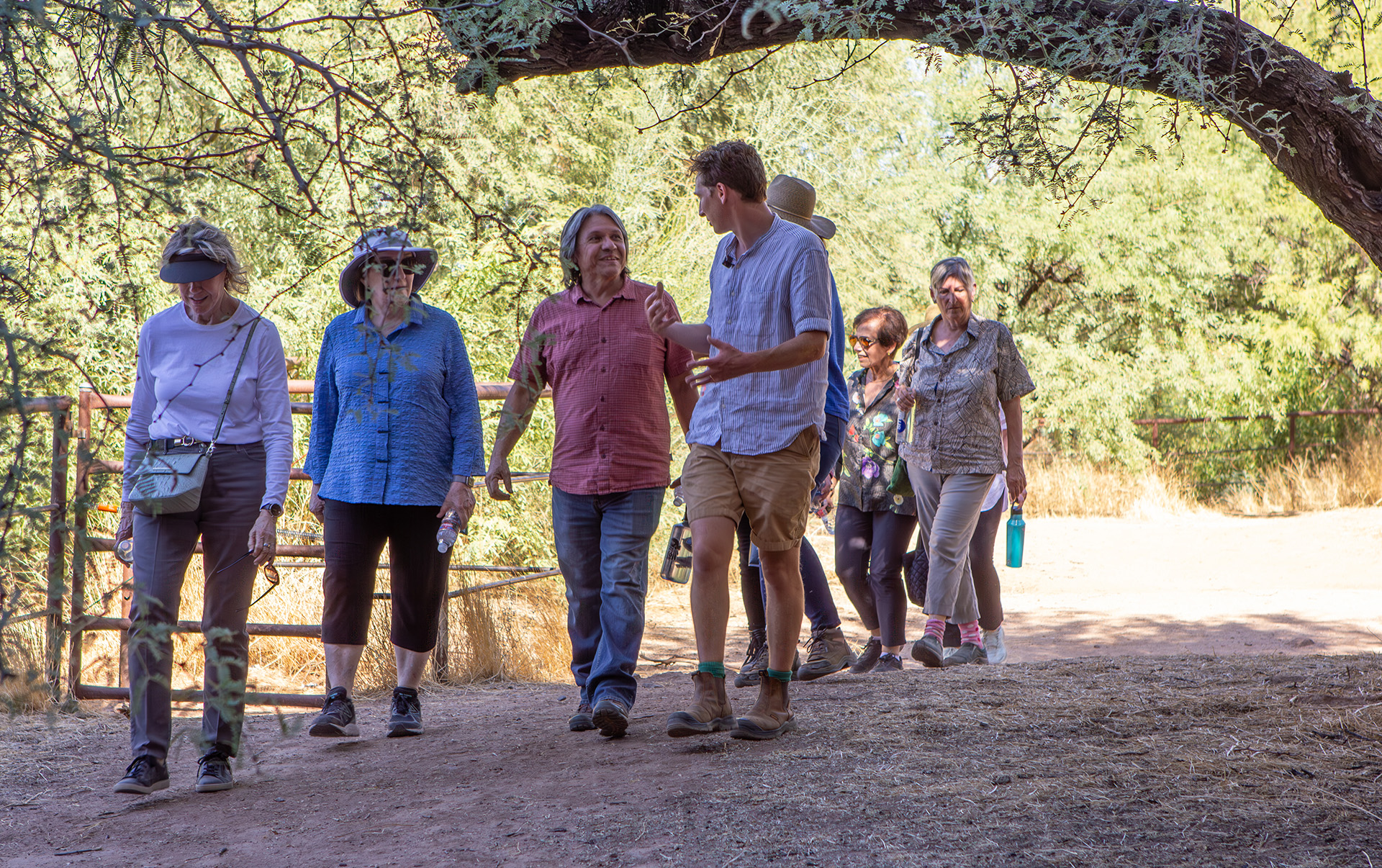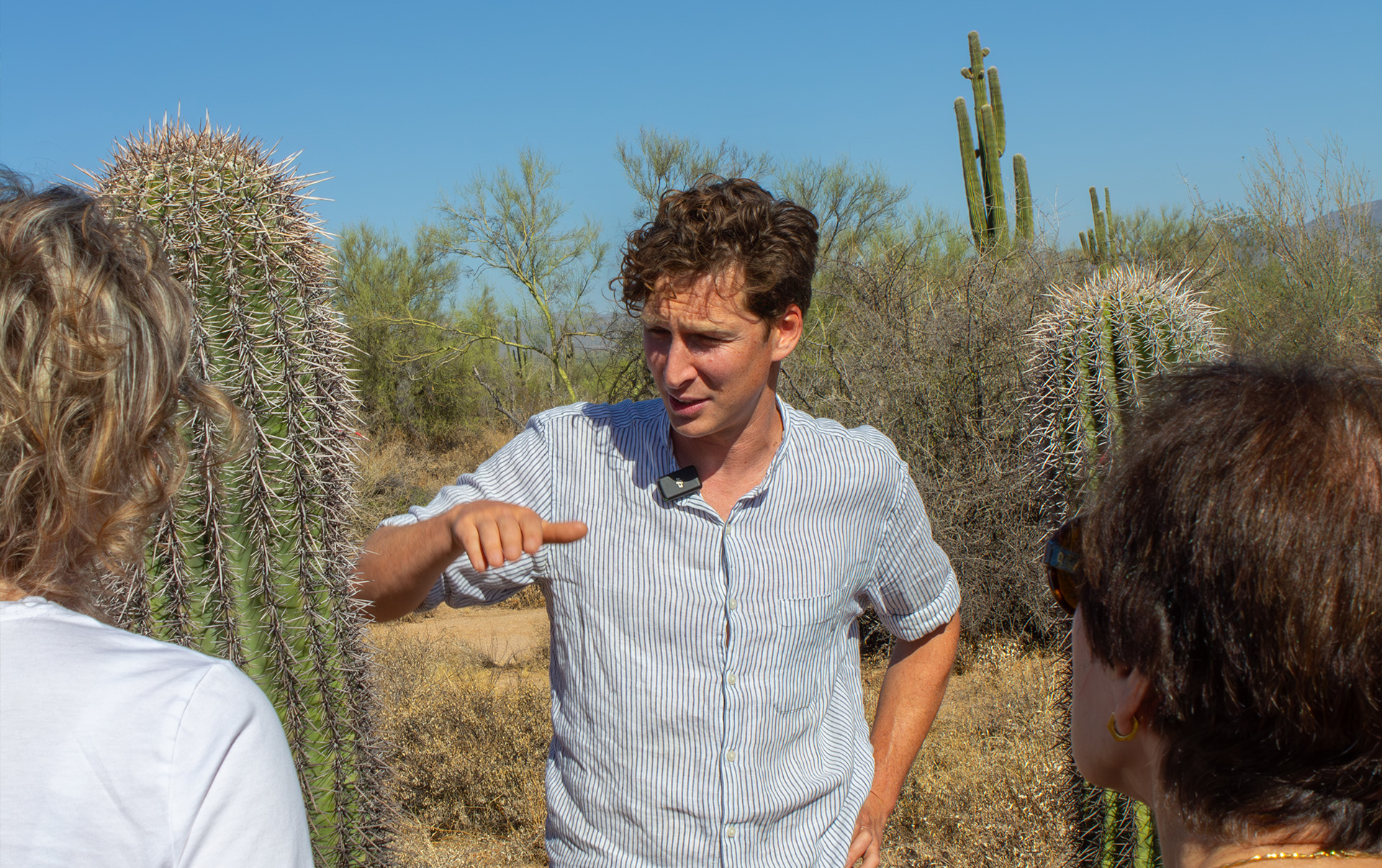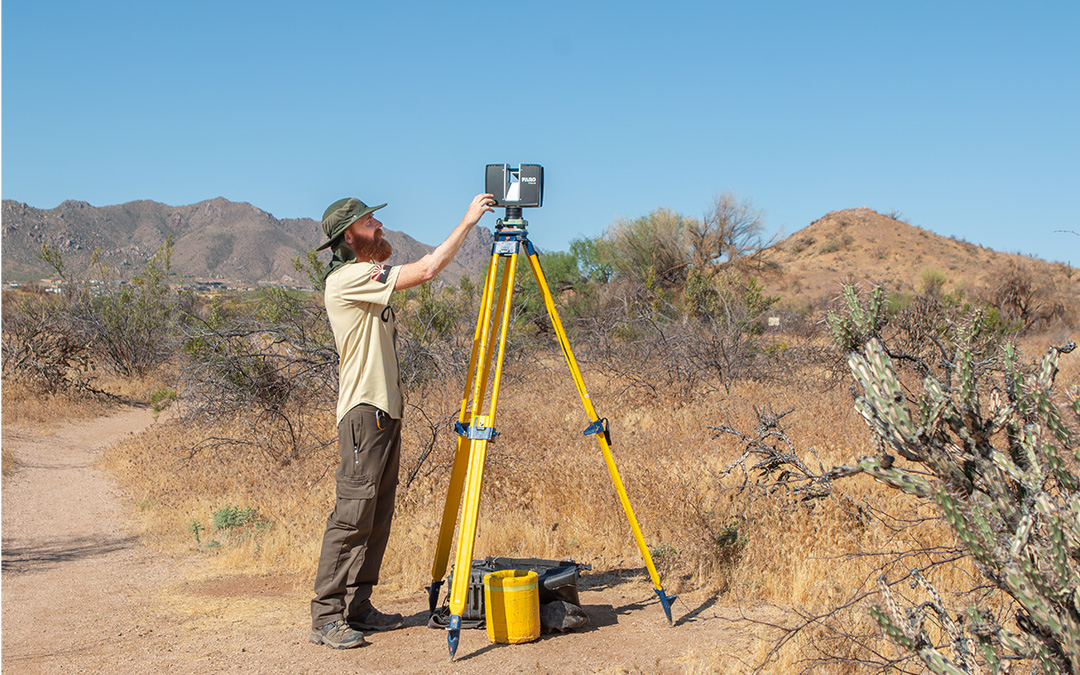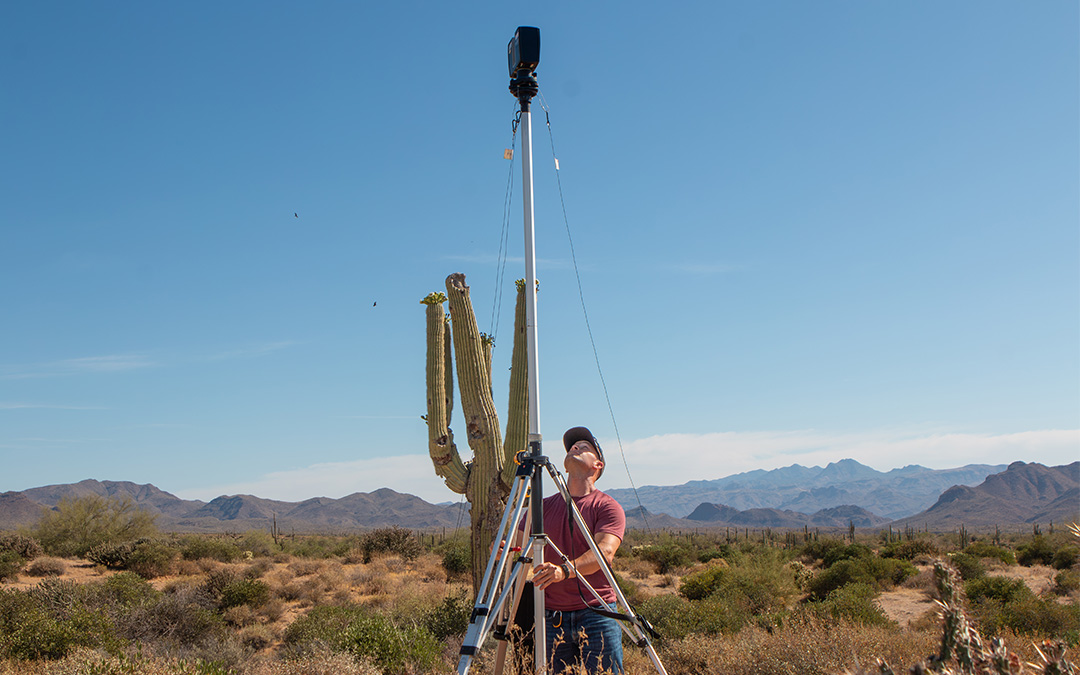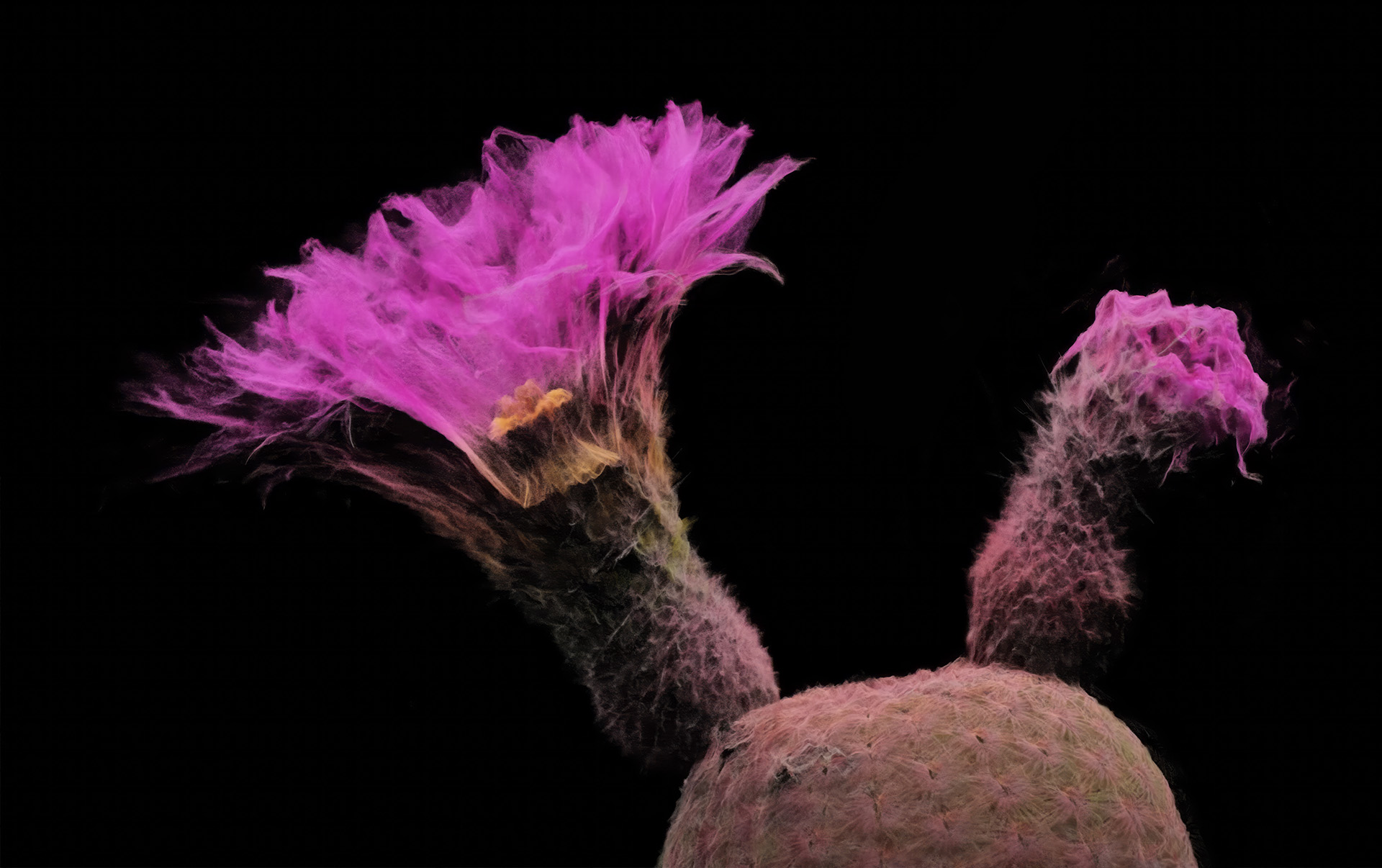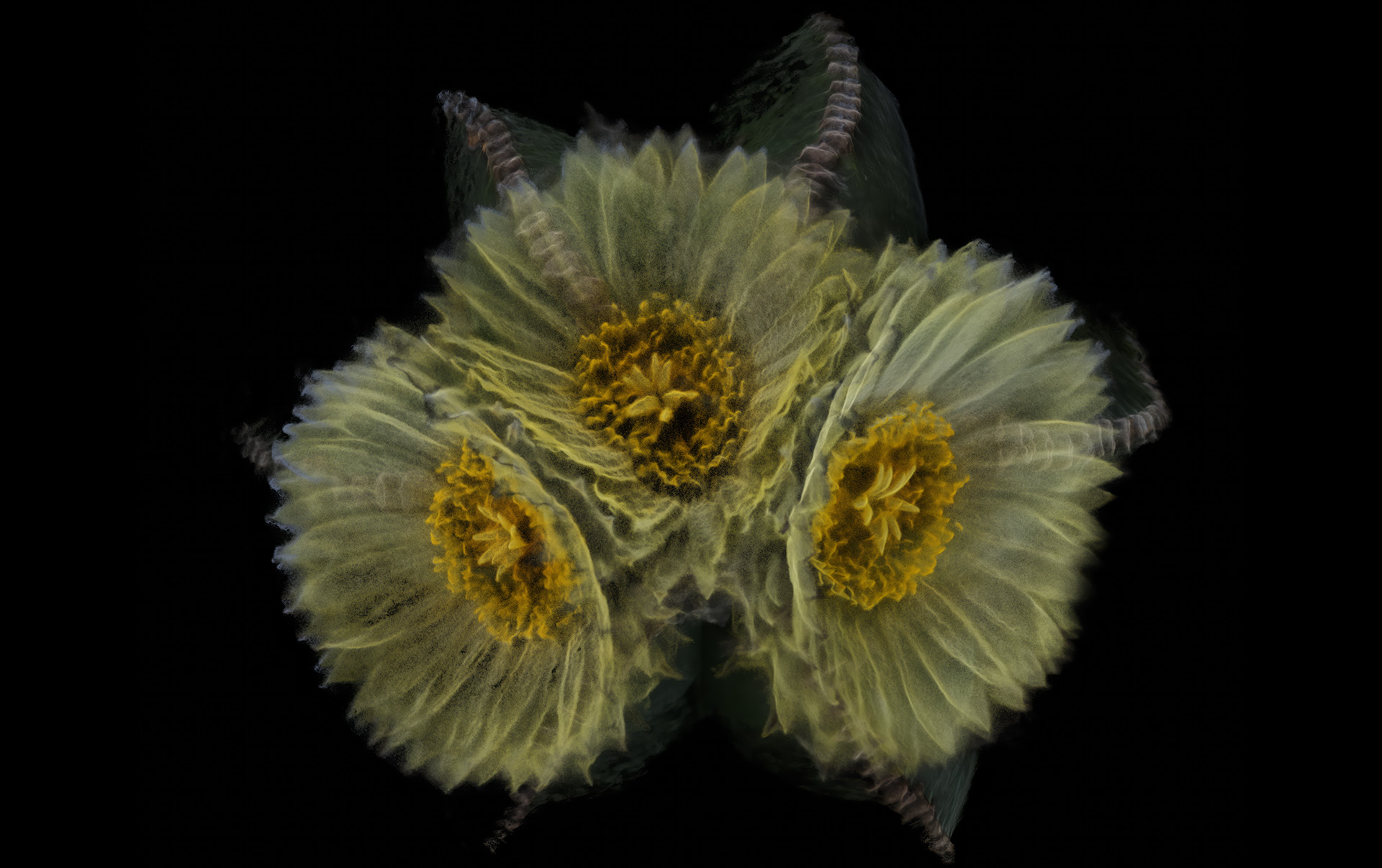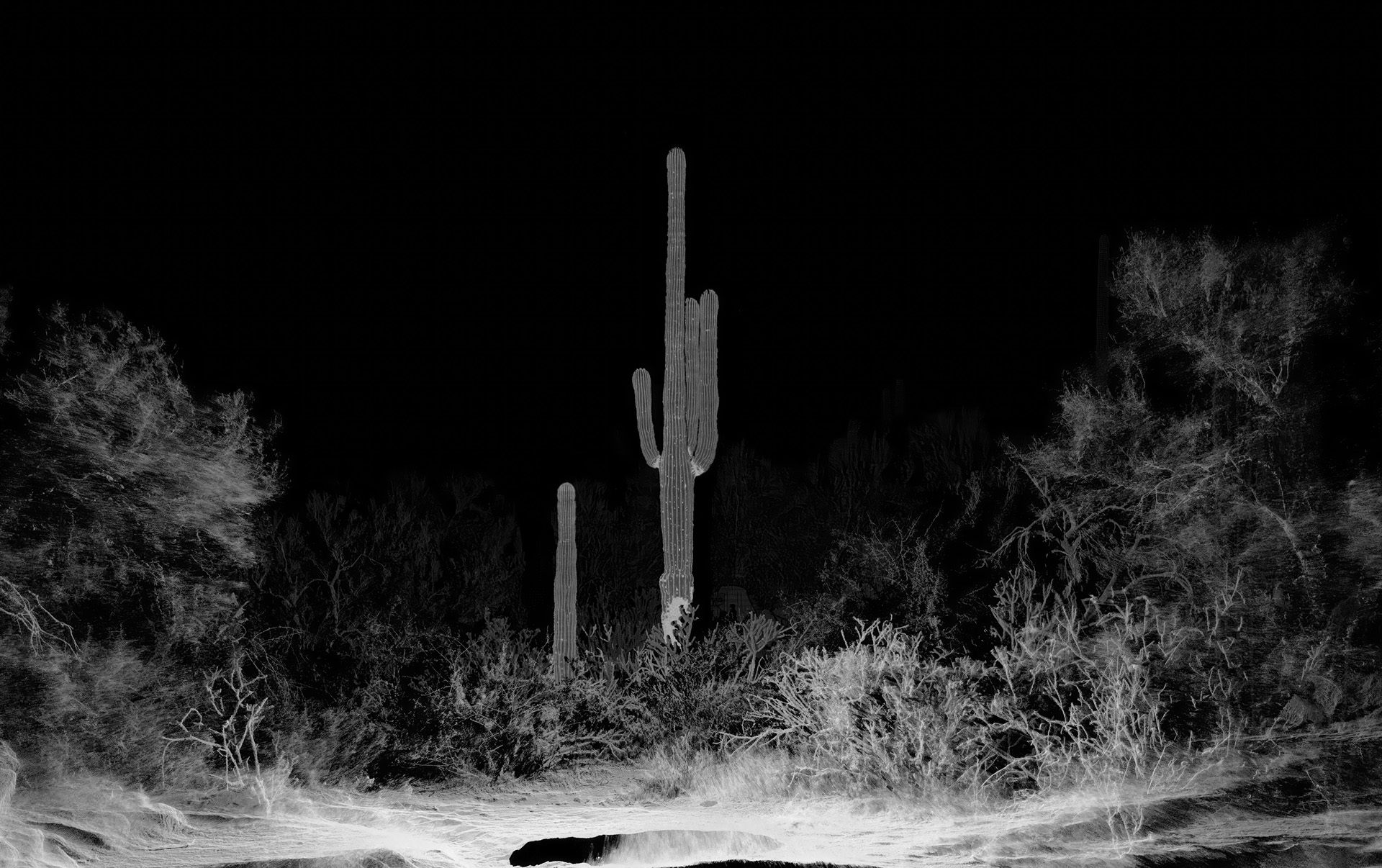Something extraordinary is coming to Desert Botanical Garden this fall.
FRAMERATE: Desert Pulse opens Oct. 11. This unique exhibition will bring the desert alive like never before using cutting-edge technology that captures the rhythms of nature into a powerful visual journey.
Created by ScanLAB Projects, a London-based, artist-led studio known for pushing creative boundaries, Desert Pulse transforms real time 3D scan data into mesmerizing video installations. The studio uses its signature pointcloud aesthetic to capture the beauty, fragility and resilience of both natural and built environments. The result is a transformative experience that invites guests into the visual and emotional energy of the Sonoran Desert.
Dive deeper into the exhibit with our exclusive artist Q&A, where ScanLAB co-founders Matt Shaw and William Trossell share insights into their creative process, the tech behind the art and the inspiration drawn from the desert itself.
Q: Where does the name ScanLAB Projects come from?
A: Back when Matt and I were both studying architecture, we were organizing a week of experimenting with our 3D scanner and we simply called that period “ScanLAB”—our scanning laboratory. That week saw us scanning weather, mist, rainbows and distortions of spaces using huge flexible mirrors. When it came time to officially name our studio, we added “Projects” because it perfectly captured the nature of how we work—always exploring different interests, collaborating across disciplines and approaching each new challenge as a distinct creative project.
Q: What is LiDAR technology, and how is it used in the exhibit?
A: LiDAR is essentially our camera, but instead of capturing light like traditional photography, it captures space itself. The technology shoots out millions of laser pulses and measures how long they take to bounce back, building incredibly precise 3D maps of everything it sees. We use these datasets to view the world. It’s incorporated into lots of instruments and hardware these days, from mobile phones, to cars to robotics, anything which needs to make decisions based on the physical dimension of space.
In Desert Pulse, we’ve been using LiDAR scanners positioned throughout the Garden and surrounding desert, capturing the same locations every single day for an entire year. Each scan takes anywhere from 10 minutes to an hour, like a very long exposure, but instead of freezing a moment in 2D, we’re freezing it in full three-dimensional detail. When we string all those daily scans together, we can watch the desert transform through time in ways that would be impossible with any traditional camera. You’re seeing the actual geometry of the landscape shift, cactus grow and flowers bloom, all held in this beautiful pointcloud aesthetic that lets us move around in space and time simultaneously.
Q: Why the Sonoran Desert? What inspired you to create a piece about this unique environment?
A: Matt and I have always had a deep love for the natural world. We both grew up in and around the UK countryside actually not far from each other on the South Coast. We have an inherent understanding of the seasons and natural rhythms there, but the Sonoran Desert operates on completely different rhythms; it’s this incredible contrast that immediately captivated us as artists.
We approach this landscape as visitors, not storytellers of a place that isn’t ours to claim. Instead, we’re observers driven by curiosity, learning from local photographers, scientists, journalists, farmers, and landowners when we’re there physically. Then, back in the studio, we spend months exploring the data, often discovering things that took a full year to record. There’s something magical about that delayed revelation.
What emerges is distinctly our perspective filtered through our studio’s particular lens and technology. But the core questions we’re investigating are universal: How do these extraordinary natural cycles unfold beyond our daily perception? How do we, as humans, function as both creative and destructive forces within these environments?
The Sonoran Desert’s vastness is overwhelming. I remember those early exploration days, rising before dawn, covering ground on foot, standing in different locations and imagining what a year of daily scanning might reveal. Where might that water flow, when might that cactus bloom, grow and die, where will that pile of landfill end up, how fast could they build that house, will this dry, crispy soil beneath my feet stay locked in position for an entire year, or will it subtly shift, breathe, make new patterns, maybe even burst with lush green life?
We are both definitely now in love with the Sonoran Desert.
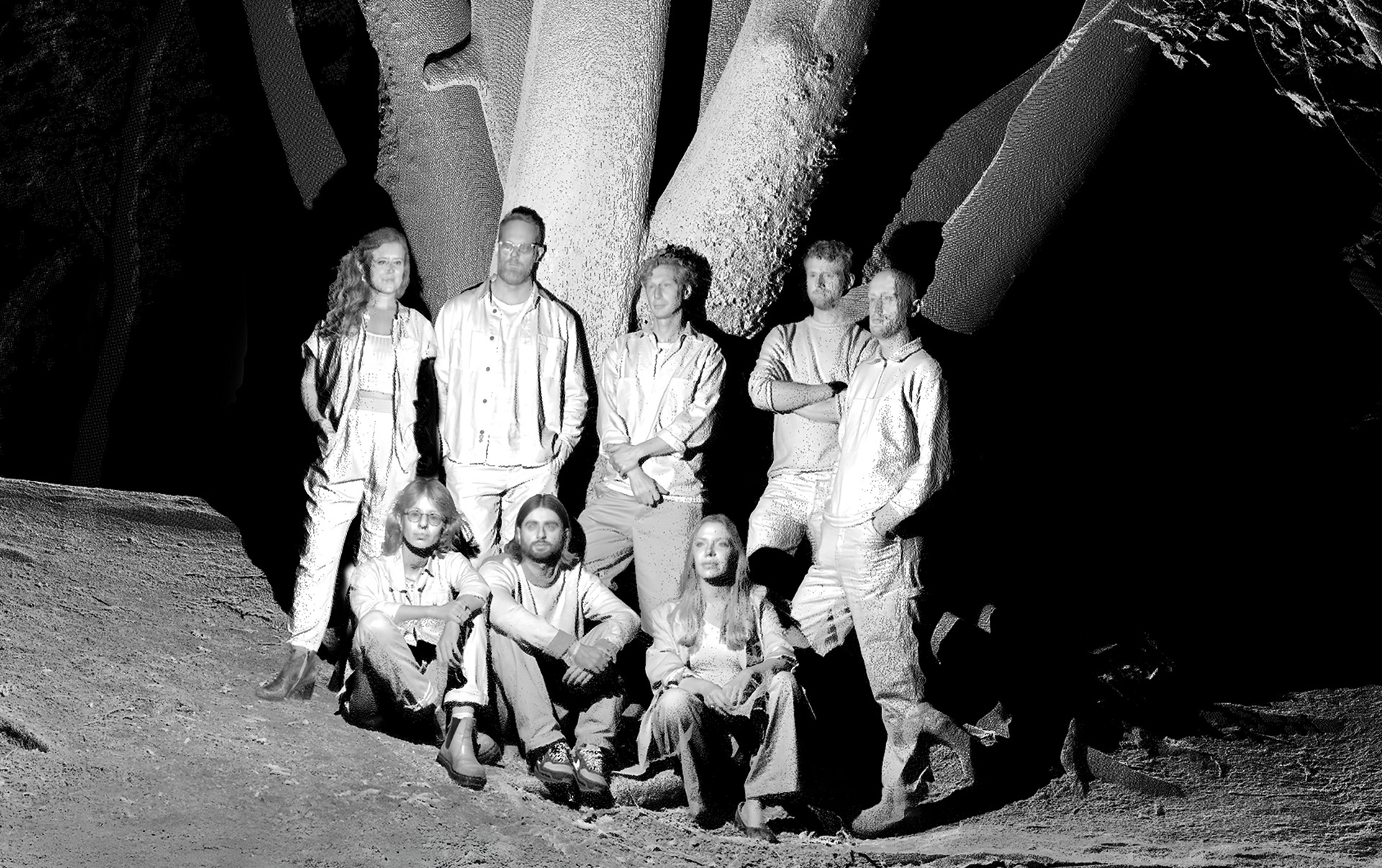
Q: What can visitors expect from this exhibit?
A: Visitors will experience the Sonoran Desert in a completely new way, seeing time unfold through our 3D scanning technology in ways impossible with traditional cameras or the naked eye. You’ll witness the surprising movement of cactus, saguaro’s swelling and shooting upward, chollas dancing, and the breathtaking moment-by-moment unfurling of desert blooms.
The artwork is embedded throughout the Garden itself, with high-fidelity LED screens nestled among the living cacti, creating this incredible dialogue between the digital and physical worlds. You’ll move through the space experiencing both intimate moments, like the breathing rhythm of individual petals, and vast landscape transformations across an entire year. It’s designed to encourage both movement and stillness, letting you discover these time-traveling viewpoints at your own pace.
Q: In the thousands of images that were captured, were there moments that surprised you?
A: Absolutely! Seeing their movement through our scanning revealed the dancing of cholla, the way Opuntia pads wiggle, flap and droop and inhale.
But perhaps the most surprising element has been the blooms themselves. We developed an entirely new technique for this project, using robotic camera rigs in climate-controlled chambers to capture every petal unfurling. The visceral, bodily way these flowers open and close, with rhythms and cadences that could only emerge through nature – that breathing, rippling joy of watching petals dance as points of light—that’s been extraordinary.
And then there’s the human element that surprised us too – the incredible, sometimes terrifying ways our species carves into and shapes this landscape, from new developments to waste management, all happening on these different timescales alongside the desert’s ancient rhythms.
Q: What do you hope visitors take away from this exhibit?
A: We hope people leave with a fundamentally shifted sense of time and their place within these larger natural cycles. When you see a year compressed into moments, or a flower’s bloom stretched into a dance, it changes how you think about the timescales beyond our daily experience, the time it takes for an ecosystem to evolve, for a landscape to adapt to rising temperatures, for a cactus to mature.
We want visitors to feel that sense of wonder and responsibility that comes from truly witnessing the beauty and fragility of this environment. The work places humans very clearly in the story alongside the desert and its life, so hopefully people walk away thinking and feeling, and perhaps acting, in ways that respect these longer timescales and acknowledge our interconnectedness with these natural systems.
And honestly, we hope they fall in love with the Sonoran Desert the way we have. There’s something about seeing it through this lens that reveals its incredible resilience and delicate beauty in ways that stay with you long after you leave.
